Advanced or manual disk partitioning is available for those that want to create a custom set of partitions for installing Ubuntu 11.04. For whatever reason or reasons you choose to use the advanced disk partitioning tool, this article gives a step by step guide, with detailed explanations, on how to do it.
This tutorial assumes that you are going to create partitions for a standalone installation of Ubuntu 11.04. If you are going to create partitions for dual-booting with Windows or another Linux distribution, a future article, to be published soon, will provide instructions on how to create partitions manually, when dual-booting.
On a default installation of Ubuntu 11.04, the installer creates just two partitions; the first for /, the root directory, and the second for Swap. When creating partitions for installing any desktop Linux distribution, my recommendation is to create the following four partitions:
- /boot, the boot partition. This is where programs critical for booting the system will reside.
- /, the root directory. The bulk of the programs used for running the system will be installed here.
- Swap, unformatted disk space for use as virtual memory.
- /home, the partition where your home directory will be located. In the course of using the system, files and folders you create will reside in various folders here.
Note that this guide is for creating partitions when using the graphical installer available with the CD and DVD ISO images. The Alternate Installer CD ISO image uses an ncurses-based installer. To reduce the number of images used, this tutorial begins at the step where disk detection starts.
Depending on the state of the disk you are installing on, the disk partitioning methods step will look like the one below. To get to the advanced partitioning tool, select the Something Else option and click Forward.

This is the main window of the advanced disk partitioning tool. This is a standalone installation, so the first task is to delete all existing partitions. If the target disk is a new one and it has not been initialized, select it and click the New Partition Table button.

When you are done deleting existing partitions, or initializing the disk, if it needed to be initialized, the main window will look just like this. Now, you can start creating partitions. Note that the first partition should be mounted at /boot.
Select the free space and click the Add button.

This is the partition creation window of the advanced disk partitioning tool. There is nothing very complicated about it, but if you are new to disk partitioning on Linux, the following explanation is for you: There are three types of partitions that we can create with this tool, and they are, primary, extended, and logical. The disk partitioning scheme used by this tool allows for a maximum of four primary partitions. I am not going to go into the reasons, but just understand that you can only create four primary partitions. There is no way around that unless you want to use a different partitioning scheme, which this tool does not support
But what if you want to create more than four partitions in this scheme? That is where an extended partition comes in. When you create one partition as an extended partition, the system makes it possible to create an unlimited number of partitions under it. Those partitions are called logical partitions.
Except for the partition that will be used as swap, any other partition has to be formatted, a file system stamped on it and then it is mounted at a particular directory – the Mount point.
That is a summary explanation of disk partitioning. Now, let us actually create those partitions.

If you are attempting to install Ubuntu alone on the disk, the installer will create the first partition as a primary partition. And that first partition, following the recommendation made earlier, should be mounted at /boot. The default file system for /boot on Ubuntu is ext2. You can use that, or ext4, the default journaling file system on Ubuntu 11.04. The partition number of this boot partition, if it is the first partition on the disk, will be /dev/sda1. While many Linux distributions assign about 500 MB of disk space to /boot, only about 30 MB is used on a new installation of Ubuntu 11.04. If you are tight on disk space, you can go as low as 50 BM, but keep in mind that disk usage on /boot will grow with each upgrade. Click OK to create it.

Now that /boot has been created, select the free space and click on Add to create other partitions. Note that this step will have to be repeated for all other partitions.

The second partition will be for Swap. The installer will attempt to create it as a logical partition, but you do not have to. Like /boot, it could also be a primary partition. The first logical partition of an extended partition is /dev/sda5. If you create this partition as a primary partition, it will be /dev/sda2.
Select “Swap area” from the “Use as” dropdown menu. The “Mount point” menu will be disabled because Swap does not need a mount point. A disk size of 2000 MB or 2 GB is usually good enough for Swap. Add.

The third partition will be for /. The installer recommends a minimum of 4.4 GB of disk space for installing Ubuntu 11.04, but on a new installation, just 2.3 GB of disk space is used. As more applications are installed on a running system, disk usage will grow, so you want to be very generous here – if you have disk space to spare. The default file system on a non-boot partition is ext4. Other options available are ext3, xfs, jfs and reiserfs. Btrfs is also a file system option, but the disk partitioning scheme for installing Linux on a btrfs file system is slightly different from this one. That will be covered in another article.
OK to create this partition.

The final partition will be for /home. The file system is ext4, and you may use the available disk space here. OK

Back to the main manual partitioning window, you can see all the partitions just created. Before you click Install Now, you have to determine where GRUB, the boot loader, will be installed. On a standalone installation, the best location is the default – in the Master Boot Record of the disk. It is also possible to install it in the /boot partition, but that is not recommended for this installation.
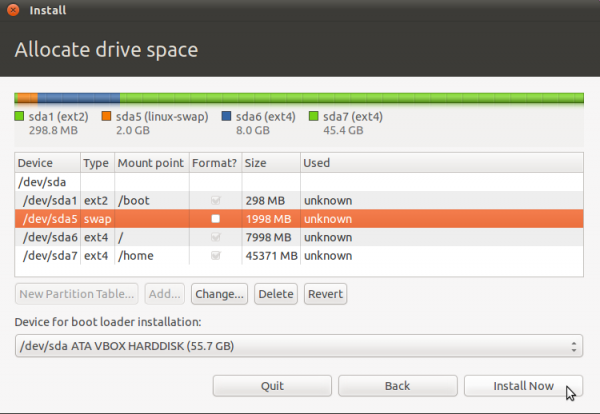
That is how to partition a disk using Ubuntu’s advanced disk partitioning tool. You can have quality articles like this delivered automatically to your feed reader or inbox by subscribing via RSS or email.
This website now has a Question and Answer section. Use the commenting system for simple comments, but for more involved assistance, please use the Q & A section.

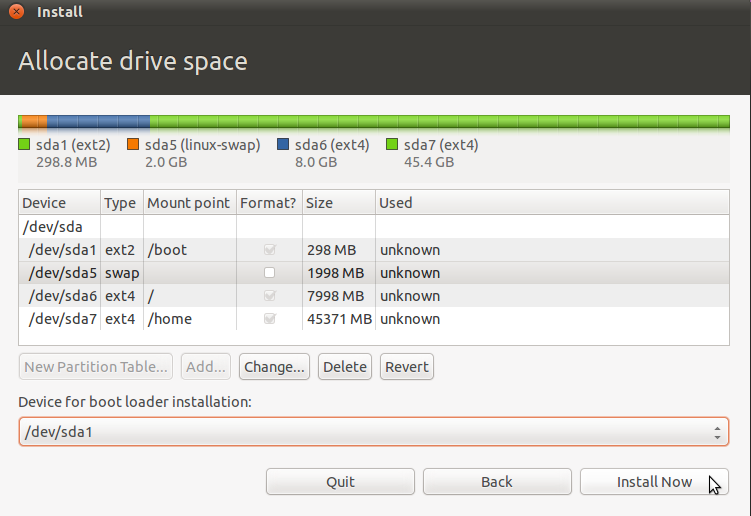

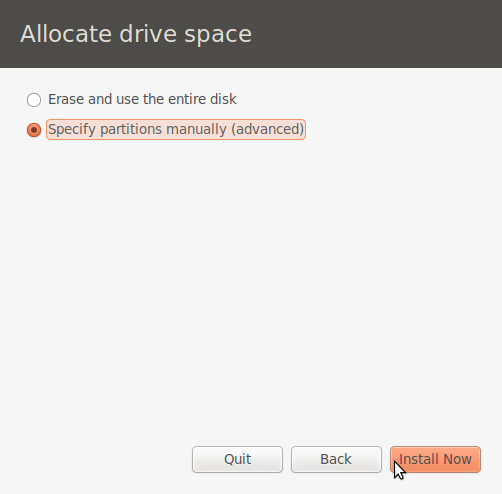
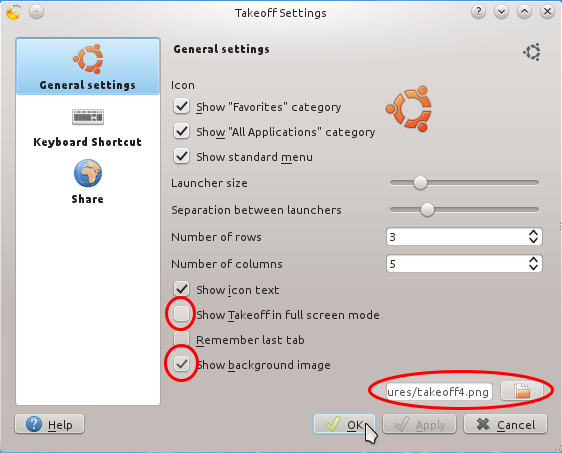
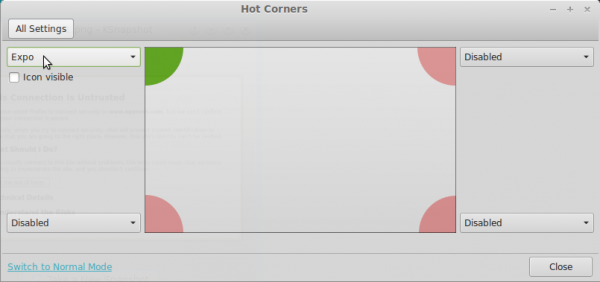


Quite usefull. Just have to add that if you have any data on the disc, like windows folders, first you have to edit that partition, make it smaller and select do not use, and than you will get free space where you can do the next steps.
I am pondering and searching for a scanner which will be beneficial for hand drawn animation.
I need it to… :
be compatible with linux
be quick
great for scanning a lot of drawings
NOT distort or alter the quality of my drawings as I want to put the drawings into finished animation.
I am basically looking for a scanner which will work for my operating system; Ubuntu Linux, and give me the professional quality which you see with television aired 2d animation shows.
Hi There Linuxbsdos,
Thanks for the info Disk partition software can be a life saver if you ever have a computer disaster. Fortunately, with a little bit of effort, you can save yourself from a computer nightmare. With disk partition software you can protect your important data and be able to recover from a computer crash and make a system recovery a breeze.
Keep up the posts!
My computer is only seeing about 62.5 gb of a 500 gb disc. I am connected via usb into a sata.
Is this a brand new disk?
Thanks a lot. After Windows and Mac OS, I am thinking to give Linux a shot. Looking forward to more similar posts!
I want to thank you, too. Very helpful!
quite a good article, there is no where i could find a tutorial with detailed screenshots, good work.. i found it very usefull..
by the way, why you used 300gb h.d ? can you give recommends for 1tb hd for patitioning?
thanks again,
amir ashkenazi
http://www.amirwebdeveloper.com/blog
thank you very much . this article is useful for me 🙂
I am in the process of installing Ubuntu 11.04 on a netbook with a small 16gb ssd drive, and this page was incredibly helpful. Thank you for the time you spent providing so many details. /cheer
awesome article : very clear and helpful.
thanks a lot.
excellent description
good job!!!
Very nice article. Detailed and easy to understand.
Very helpfull and very simple, thanks for your time.
yes on the kubuntu. matter of fact you can install it via what ever package manager you choose right inside ubuntu. after you install it… from the login screen pick your desktop environment of choice after you have clicked your name.
i liked the article, especially the part about /boot being ext2. i don’t believe though it was stated why. ext4 not being necessary since it’s journaling function would not be useful in this application. also that /boot doesn’t play well with raid, encryption or unsupported filesystems.
ext4 or any other journaling file system is not necessary for /boot, but that does not mean it cannot be used. Some distros actually use ext4 on all partitions, /boot included.
The overhead associated with using a journaling file system on /boot is noting to worry about.
Just wondering if I can install kubuntu side by side ubuntu and share “/home” and “swap”. I infact tried this out but the installer crashes!
There are 8 different GNU/Linux distros installed on my HDD (8 separated partitions) and all of them sharing the same swap and /home partitions (different users ofc). No problems at all…